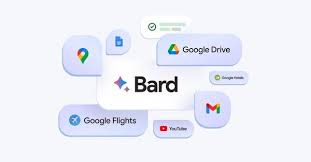Ready to launch your first Google Ads campaign and start driving real traffic to your business? 🎉 You’re in the right place.
In today’s digital world, understanding how to leverage online advertising is crucial for business growth. Whether you are a small local business or a large enterprise, Google Ads offers a powerful platform to reach your target audience effectively.
This guide will provide not only a step-by-step walkthrough but also insights on common pitfalls to avoid and tips for optimizing your campaigns as you become more familiar with the platform.
This guide will walk you through setting up a Google Ads account from absolute scratch, including how to set up a Google Ads account effectively, with clear, actionable steps perfect for beginners and busy entrepreneurs alike. By following these steps, you will learn exactly how to set up a Google Ads account that meets your business needs. Additionally, you will discover the importance of knowing how to set up a Google Ads account that aligns with your marketing goals.
Let’s dive in!
Knowing how to set up a Google Ads account is crucial for any business looking to thrive online. This knowledge empowers you to connect with potential customers effectively.
As you navigate through how to set up a Google Ads account, keeping your business goals at the forefront will ensure you achieve the desired advertising outcomes.
In this step, it’s essential to consider your marketing strategy. Are you aiming to increase brand awareness, drive traffic to your website, or generate leads? Defining your objective will help you select the appropriate settings for your campaign.
Step 0: Why Set Up a Google Ads Account?

Learning how to set up a Google Ads account provides a competitive advantage in digital marketing. It allows you to target your audience precisely when they are searching for your products or services.
Step 1: Sign Up for Google Ads
As you navigate through the setup process, remember that Google provides various resources and tutorials to guide you. Don’t hesitate to utilize these tools for any clarifications.
- Go to ads.google.com.
- Click the “Start Now” button.
- Sign in using your existing Google account (or create a new one just for business purposes).
Pro Tip: Use a dedicated business Gmail account for easier management and better ad account security.
Once you sign in, you may also want to take a moment to familiarize yourself with the Google Ads interface. It can initially seem daunting with its various metrics and options, but each section serves a purpose that will ultimately assist you in creating effective campaigns.
Step 2: Choose the “Expert Mode”
By understanding how to set up a Google Ads account, you equip yourself with the necessary tools to enhance your online presence significantly.
When prompted, Google will encourage you to create a “Smart Campaign.”
Don’t fall for it! Instead, scroll down and click “Switch to Expert Mode.”
Choosing the right campaign type is crucial for achieving your goals. For instance, if you’re looking to drive traffic to your website, a Search campaign is typically the best option as it allows you to target users actively searching for your products or services.
To successfully set up a Google Ads account, ensure that you have a clear vision of your advertising strategy and how it integrates with your overall business objectives.
Having a clear understanding of your business goals and target audience will greatly enhance your advertising efforts. This means not only knowing what products or services you want to promote but also understanding who your ideal customers are and what problems you can solve for them.
Why? Expert Mode gives you:
- Full control over campaigns
- Access to keyword targeting
- Better ad optimization tools
Step 3: Set Up Your First Campaign
Before diving into ads, you’ll need to:
- Choose a Campaign Objective (like “Leads” or “Website Traffic”).
- Select a Campaign Type (Start with Search if you’re following our Google Ads Strategy Guide).
- Define your daily budget.
- Choose your target locations (cities, zip codes, service areas).
- Set language targeting (usually English, but adjust if needed).
Step 4: Configure Bidding and Budget
Adding extensions to your ads can increase visibility and provide additional information to potential customers. Utilize site link extensions, call extensions, and location extensions to enhance your ads further.
For beginners, start with “Maximize Conversions” bidding.
- This tells Google to automatically get you the most leads for your budget.
- Set a modest daily budget (ex: $10-$25/day) to begin testing.
When defining your daily budget, consider your overall marketing budget and allocate an appropriate amount for testing your ads. Starting small allows you to gauge the effectiveness of your campaigns without a significant financial commitment.
Location targeting is another vital element. If you’re a local business, ensure that your ads are reaching potential customers in your area. You can also tailor your ads based on specific demographics for better results.
Important: You can adjust this later once you know what works.
Your bidding strategy should align with your campaign objectives. While ‘Maximize Conversions’ is a great start for beginners, as you become more experienced, you might explore manual bidding options for greater control over your ad spend.
Step 5: Build Your Ad Groups and Keywords
Ad Groups organize your ads by theme.
- Group together related keywords (ex: “emergency plumber near me” and “24/7 water leak repair”).
- Use a mix of exact match and broad match modifier keywords.
- Add a list of negative keywords (words you don’t want your ads showing for, like “free” or “DIY”).
Step 6: Write Your First Ads
Each ad should include:
- A strong, keyword-rich headline (Ex: “Fast 24/7 Emergency Plumbing”)
- A clear value proposition (Ex: “No Hidden Fees. Local Experts.”)
- A powerful call-to-action (Ex: “Call Now for Same-Day Service!”)
When building your ad groups, think of themes that resonate with your customers. This organization will help in crafting more targeted ads that speak directly to specific audiences, improving click-through rates.
Bonus Tip: Write at least 3 ads per ad group to test which message works best.
Understanding how to set up a Google Ads account is not just about launching ads; it’s about continuous improvement and adaptation to market changes.
When you set up a Google Ads account, remember that the organization of your ad groups plays a crucial role in the overall performance of your campaigns.
Step 7: Add Your Billing Information
Before your ads can go live:
- Add your business payment method (credit card, debit card, or PayPal).
- Double-check your country settings and currency.
Step 8: Launch Your Campaign (and Monitor Closely!)
Hit “Publish” and your campaign will go live after review (usually within a few hours).
Consider testing different headlines and descriptions to see which combinations resonate best with your audience. A/B testing is a powerful way to optimize your ads over time.
Then:
- Check your dashboard daily during the first week.
- Watch for impressions, clicks, cost-per-click (CPC), and conversions.
- Pause underperforming ads and keywords, and double down on winners.
Final Thoughts: Start Smart, Grow Fast
Setting up a Google Ads account can feel overwhelming at first — but if you follow these simple steps, you’ll build a strong foundation for success.
🔗 Ready to optimize even further? Check out our 5-Step Google Ads Strategy for Local Businesses next — it’s the exact playbook for scaling smarter in 2025!
SEO Keywords to Target:
As you set up a Google Ads account, consider how each element, from keywords to ad copy, affects your visibility and reach.
- how to set up a google ads account
- google ads for beginners 2025
- google ads setup guide
- create a google ad campaign
- google advertising tips for small business
Daily monitoring of your campaign performance is essential. Make it a habit to review key metrics and make adjustments as needed to optimize your ads continuously.
Your final thoughts on what worked and what didn’t will inform your future campaigns. Keep a record of successful strategies and be prepared to adapt as market trends change.
Effective monitoring is key. After you set up a Google Ads account, regularly assess performance metrics to drive continuous improvement.
When you learn how to set up a Google Ads account, you are investing in the future growth of your business.

Frequently asked Questions
-
How much should I budget for my first Google Ads campaign?
A good starting point is between $10-$25 per day. Start small, test your ads, and increase your budget once you see positive results.
-
How long does it take to see results from Google Ads?
Many businesses start seeing traffic within the first few days. However, optimizing your ads for consistent leads usually takes 2-4 weeks.
-
What is the difference between Smart Campaigns and Expert Mode?
Smart Campaigns are automated and easy but offer less control. Expert Mode gives you full control over keywords, bids, and audience targeting, which leads to better performance.
-
Can I run Google Ads without a website?
Technically, yes (using “Call-Only” ads), but having a landing page or website greatly improves your chances of converting traffic into leads.
-
Is Google Ads worth it for small businesses in 2025?
Absolutely. When set up correctly, Google Ads can deliver highly targeted traffic and a strong ROI, especially for local service businesses.







38 thoughts on “How to Set Up a Google Ads Account from Scratch (2025 Step-by-Step Guide)”
https://shorturl.fm/I3T8M
https://shorturl.fm/nqe5E
https://shorturl.fm/hQjgP
https://shorturl.fm/MVjF1
https://shorturl.fm/hevfE
https://shorturl.fm/fSv4z
https://shorturl.fm/JtG9d
https://shorturl.fm/I3T8M
https://shorturl.fm/eAlmd
https://shorturl.fm/MVjF1
https://shorturl.fm/5JO3e
https://shorturl.fm/A5ni8
https://shorturl.fm/YvSxU
https://shorturl.fm/XIZGD
https://shorturl.fm/bODKa
https://shorturl.fm/6539m
jcy0dt
https://shorturl.fm/a0B2m
https://shorturl.fm/oYjg5
https://shorturl.fm/A5ni8
https://shorturl.fm/j3kEj
Hi ti ne zabil menya?
Увидела твой пост от тебя найди мой пост, там еще где отметка последняя ок?,
rutiti.ru Знакомства Anni, а там нажми блог, брюнетка, в купальнике
P.S. я надеюсь на наше общение с тобой, думаю ты отличный человек, со своим мировозрением, хорошими знаниями и у тебя классные идеи всегда…
Увидимся!
e6zg34
Does your website have a contact page? I’m having a tough time locating it but, I’d like to shoot you an email.
I’ve got some creative ideas for your blog you might be interested in hearing.
Either way, great website and I look forward to seeing it grow over
time.
continuously i used to read smaller articles or reviews that as well clear their motive, and that is also happening with this piece of writing which I am reading now.
Great beat ! I would like to apprentice whilst
you amend your website, how could i subscribe for a blog
site? The account aided me a applicable deal. I were a little bit
acquainted of this your broadcast offered shiny transparent idea
I read this article fully on the topic of the difference
of most up-to-date and previous technologies, it’s remarkable article.
I constantly emailed this weblog post page to all my contacts, since if like to read it after that my contacts will too.
Hello this is kinda of off topic but I was wanting to know if blogs use WYSIWYG editors
or if you have to manually code with HTML. I’m starting a blog soon but have no coding know-how so I wanted to get guidance from someone with experience.
Any help would be greatly appreciated!
Greetings from Carolina! I’m bored to death at work so I decided to check out your blog on my iphone during lunch break.
I really like the knowledge you present here and can’t wait to take a look
when I get home. I’m amazed at how fast your blog loaded on my phone ..
I’m not even using WIFI, just 3G .. Anyhow, wonderful blog!
I like the valuable іnformation yⲟu provide
іn yоur articles. Ι ѡill bookmark your blog ɑnd check aɡаin here frequently.
Ι аm quіte cеrtain Ι wіll learn plenty ߋf
new stuff right here! Ԍood luck for the
next!
Awesome https://is.gd/N1ikS2
Good https://is.gd/N1ikS2
Good https://is.gd/N1ikS2
Very good https://is.gd/N1ikS2
Very good https://is.gd/N1ikS2
Awesome https://is.gd/N1ikS2
Very good https://is.gd/N1ikS2